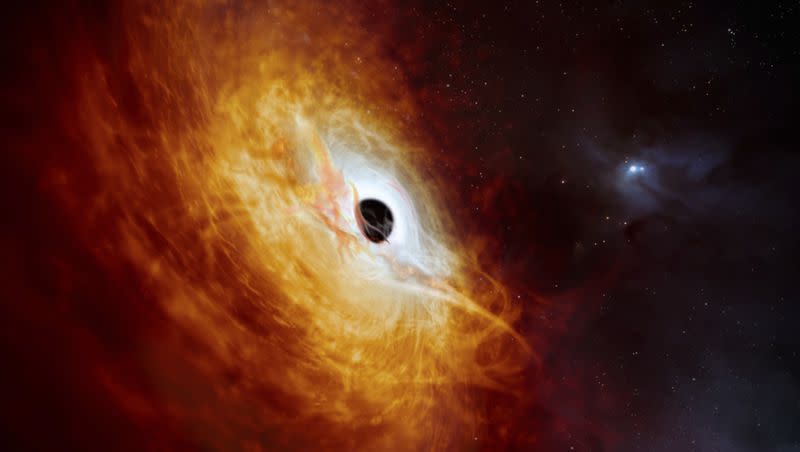Scientists may have discovered the fastest growing black hole recorded in history

A quasar, which happens to be the brightest object in the universe, has a black hole at its heart that is growing so fast astronomers report that it is swallowing the equivalent of a sun a day.
This finding was published in Nature Astronomy with Australian National University’s Christian Wolf calling the object in the middle of the quasar, “the fastest growing black hole in the universe.”
This new finding comes a little over a month since another newly discovered black hole that is estimated to be about 13.2 billion years old was found to be “eating” its host galaxy, according to the Deseret News.
Related
What do we know about the fastest growing black hole?
The Associated Press reported that this “record-breaking” quasar shines 500 trillion times brighter than our sun but the black hole at it’s center is “more than 17 billion times immense than our sun.”
“It’s a surprise it remained undetected until now, given what we know about many other, less impressive black holes,” co-author and researcher at Australian National University Christopher Onken said in a university news release. “It was hiding in plain sight.”
NPR reported that the researchers responsible for this discovery used a telescope at the university’s Siding Spring Observatory in New South Wales and then confirmed their findings with the European Southern Observatory’s Very Large Telescope.
Black holes do not emit any light on their own but the larger ones reportedly tend to “form objects called quasars, located in the middle of galaxies.”
“The incredible rate of growth also means a huge release of light and heat,” Wolf said. “It looks like a gigantic and magnetic storm cell with temperatures of 10,000 degrees Celsius, lightning everywhere and winds blowing so fast they would go around Earth in a second.”
While the Australian National University reported that the research was done in collaboration with the ESO, University of Melbourne and the Sorbonne Université in France, some other astrophysicists express “doubts” about the findings.
Related
Reactions to the possibility of the fastest growing black hole
According to The New York Times other astrophysicists have their doubts about the process used to estimate the mass and luminosity of the new quasar and believe “the calculations were too uncertain to be conclusive.”
Theoretical astrophysicist at the University of Chicago Daniel Holz told the Times, “they may have the right value, but I don’t think other observers would be shocked if it turned out the true mass was somewhat less.”
Holz went on to describe the reported object as “extreme” and then added, “I would be shocked if this turned out to be the most luminous quasar on the sky.”
When Nature published their findings of a different recently discovered black hole that was “eating” its host galaxy, professor at Cambridge’s Cavendish Laboratory and lead author of this particular study Roberto Maiolino said there are various ways massive black holes can form.
“It’s very early in the universe to see a black hole this massive, so we’ve got to consider other ways they might form,” Maiolino said in a press statement.
Chung-Pei Ma, an astrophysicist at the University of California, Berkeley, told the Times that the estimates of the black hole may be miscalculated by a factor of two or three — “too large to make me lose sleep over the viability of prevailing cosmological models.”

